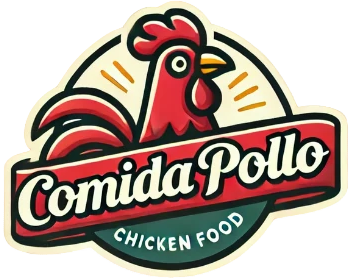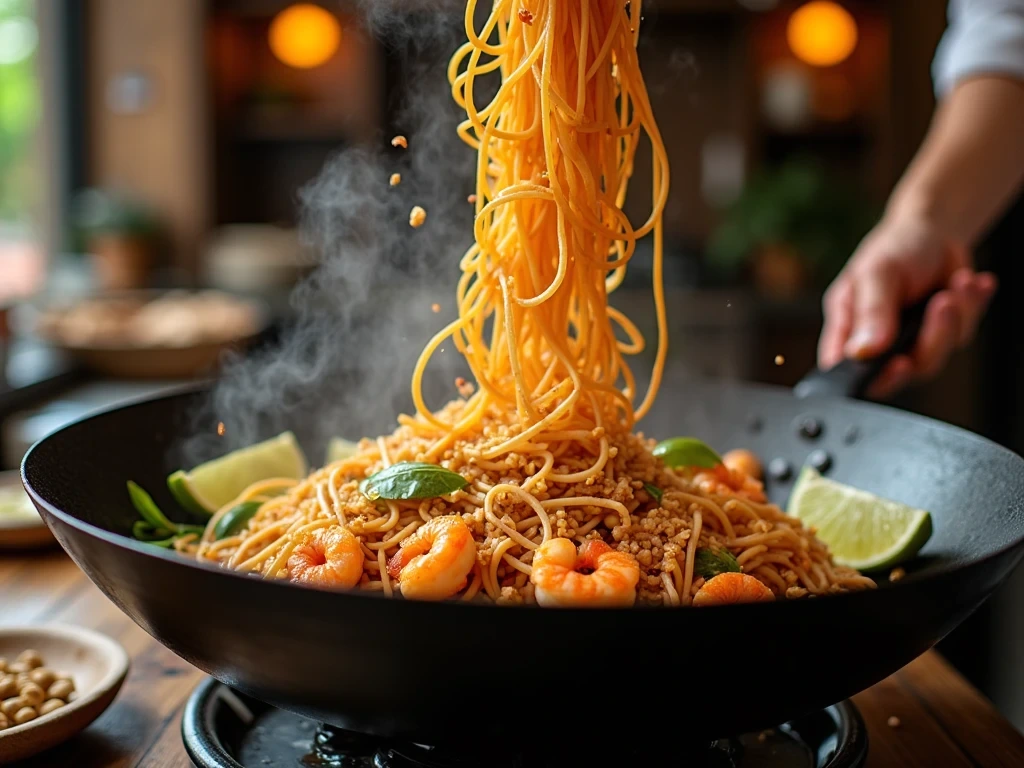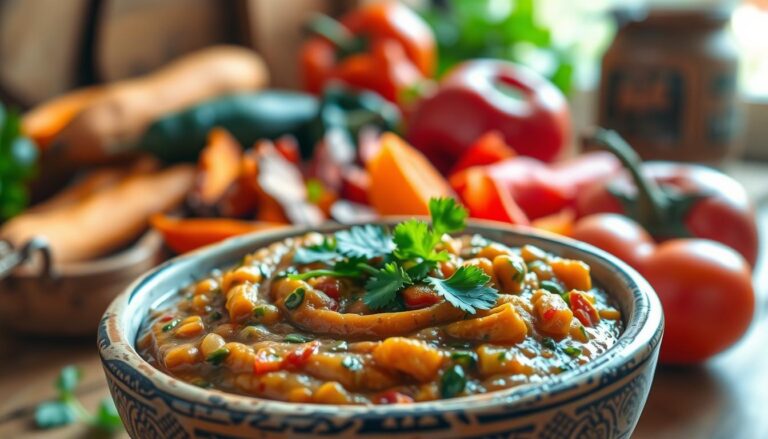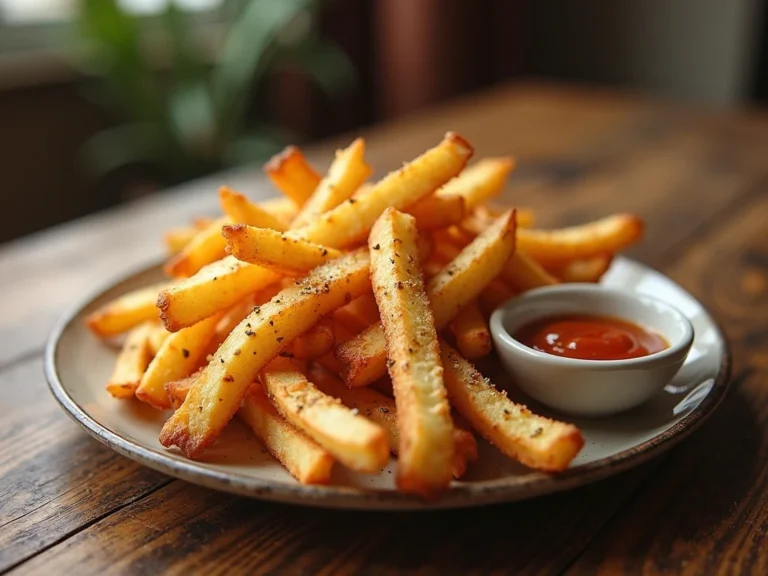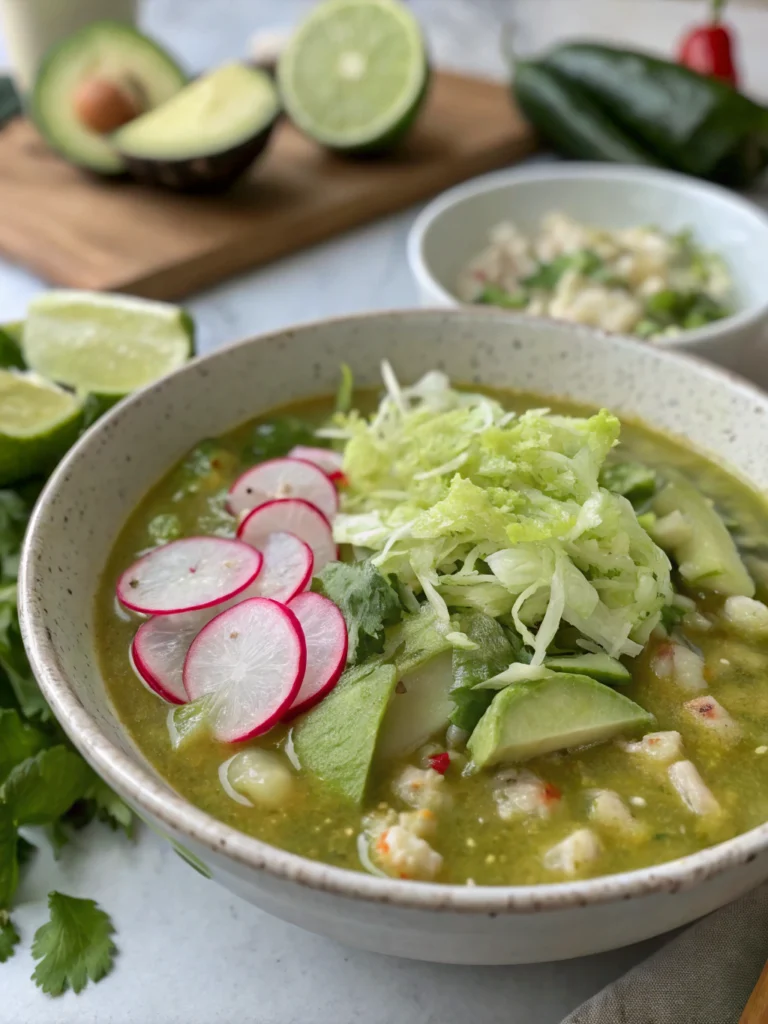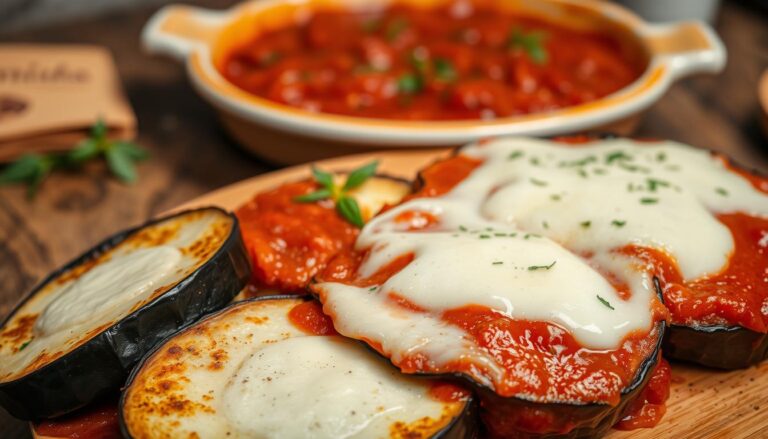Pad Thai Noodles: A Symphony of Savory, and Spicy Elegance
If you’ve ever wandered through the fragrant bustle of a night market or a lively street food alley, you’ve likely been seduced by the unmistakable aroma of Pad Thai noodles sizzling in a hot wok. The moment the rice noodles hit the pan with tamarind, garlic, and fish sauce, the scent is mouthwatering—tangy, nutty, and rich with umami. Toss in fresh shrimp or tofu, crushed peanuts, and a zingy squeeze of lime, and you’ve got a dish that dances across every corner of your palate.
Pad Thai is more than a delicious plate of stir-fried noodles—it’s a cultural crossroads, a dish that’s beloved across continents. Though rooted in Thai street food culture, its flavor and flair have found a home in kitchens around the world, especially in the Southern United States, where it’s embraced during festivals, casual gatherings, and fusion-style potlucks. It’s the kind of dish that brings people together, where chopsticks and Southern hospitality meet over a shared plate of noodles.
Table of Contents
Key Takeaways
- Cultural Importance: Pad Thai originated in Thailand as a symbol of national identity and unity. Today, it’s a global comfort food with deep cultural roots.
- Essential Ingredients: Rice noodles, tamarind paste, fish sauce, palm sugar, eggs, tofu or shrimp, bean sprouts, and crushed peanuts.
- Cooking Method: Stir-fried in a wok or pan over high heat; quick cooking preserves texture and flavor.
- Serving Style: Typically served hot with lime wedges, chili flakes, and a sprinkle of fresh herbs.
- Recipe Variations: Can be customized with chicken, tofu, or vegetables for vegetarian or vegan versions.
- Nutrition Highlights: Gluten-free (with tamari substitution), high in protein and packed with fresh ingredients.
- Tips for Success: Pre-soak noodles, balance sweet-sour-salty flavors, and cook in small batches for best texture.
Cultural Heritage of Pad Thai
Pad Thai’s story begins in 1930s Thailand, where it was introduced as part of a national campaign to promote Thai identity during economic hardship. With Chinese influence in the technique (wok frying) and Thai flavor profiles, it became a culinary ambassador of a united Thailand.
As the dish spread globally, it adapted to local tastes—becoming a Friday night favorite in Southern kitchens or a vegetarian staple at community picnics. In places like New Orleans or Atlanta, Pad Thai might be served with a Southern twist—perhaps paired with collard greens or spiced catfish.
Essential Ingredients for Perfect Pad Thai

- Rice Noodles (Sen Lek): Medium-width rice noodles are traditional. Look for Thai brands like Erawan or A Taste of Thai for authenticity.
- Tamarind Paste: This gives Pad Thai its signature tang. Choose wet tamarind paste or concentrate for best results.
- Fish Sauce: A pungent, salty umami essential. Try Red Boat or Three Crabs brand.
- Palm Sugar: Adds gentle sweetness; substitute brown sugar if unavailable.
- Protein: Shrimp, chicken, or tofu are most common.
- Eggs: Lightly scrambled into the noodles for texture.
- Vegetables: Bean sprouts, garlic chives, and sometimes julienned carrots or bell peppers.
- Garnishes: Crushed roasted peanuts, fresh lime wedges, and Thai chili flakes.
Preparation & Marination Techniques
- Soak the Rice Noodles: Place noodles in warm water for 30–40 minutes or until pliable. Don’t over-soak—they’ll soften more in the wok.
- Make the Sauce: Mix tamarind paste, fish sauce, palm sugar, and a splash of water. Adjust to taste: equal parts sour, salty, sweet.
- Prep Toppings: Beat eggs, chop garlic, slice proteins, and portion garnishes ahead of time for quick cooking.
- Optional Marination: Marinate shrimp or tofu in a splash of fish sauce and white pepper for 10–15 minutes before cooking.
The Secret to Authentic Seasoning
True Pad Thai is about balance. Tamarind brings sourness, palm sugar adds sweetness, and fish sauce delivers salt and umami. The key? Don’t overdo any single element. Taste and tweak. Like it spicier? Add Thai chili flakes. Prefer a nuttier note? Sprinkle more peanuts.
Pro Tip: Add a few drops of Thai vinegar (or lime juice) just before serving to brighten the flavors.
Step-by-Step Cooking Method
- Heat oil in a wok over medium-high heat until shimmering.
- Sauté garlic until fragrant (30 seconds), then add protein (shrimp, chicken, or tofu).
- Push to one side, scramble eggs on the other, and mix once cooked.
- Add soaked noodles and pour in the Pad Thai sauce.
- Toss vigorously for 2–3 minutes, adding a splash of water if needed.
- Stir in vegetables (bean sprouts, garlic chives).
- Plate and garnish with crushed peanuts, lime, and chili flakes.
Common Mistakes to Avoid
- Over-soaking noodles: Leads to mushy texture.
- Too much sauce: Can drown the dish—keep it balanced.
- Low heat cooking: Stir-frying demands high heat for that signature wok-char.
- Skipping garnishes: The fresh lime, peanuts, and chili flakes complete the flavor profile.
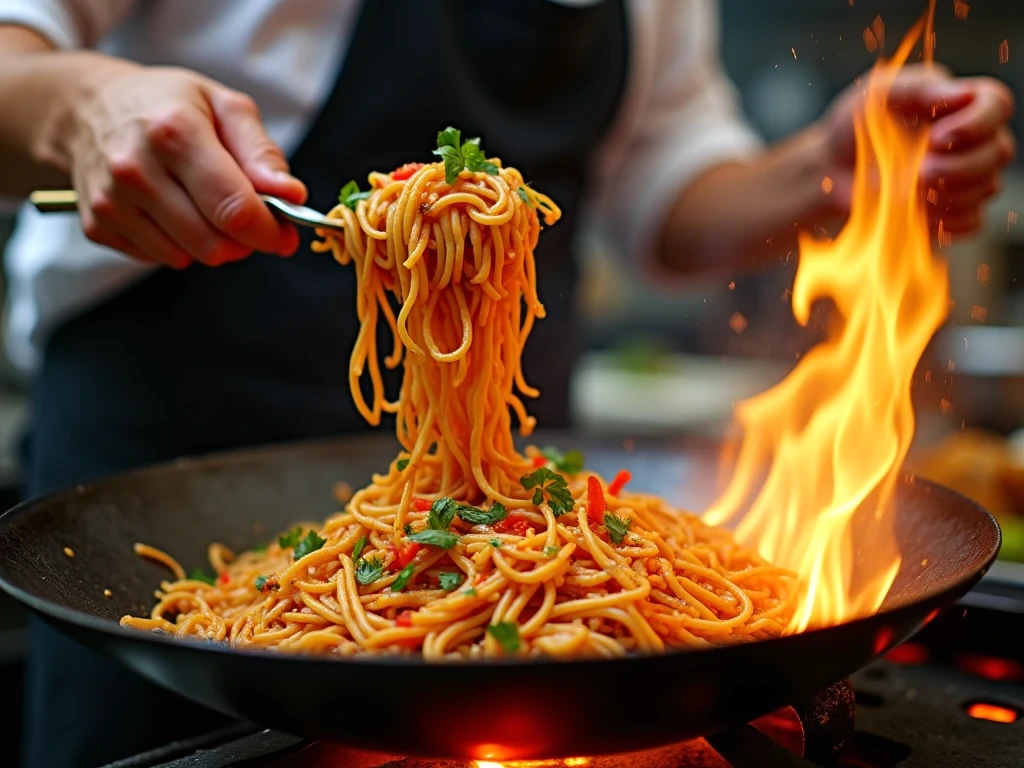
Traditional Side Dishes & Accompaniments
- Thai Iced Tea or Lemongrass Drink – Sweet, cooling beverages balance the heat.
- Cucumber Salad – A light, crunchy side to offset the richness.
- Spring Rolls – Crispy and fresh, they make a perfect prelude.
Storage and Reheating Guidelines
- Refrigeration: Store leftovers in an airtight container for up to 3 days.
- Reheating: Reheat in a hot skillet with a splash of water to revive noodles.
- Freezing: Not recommended—rice noodles lose their texture when frozen.
Conclusion: Make Pad Thai Your Own
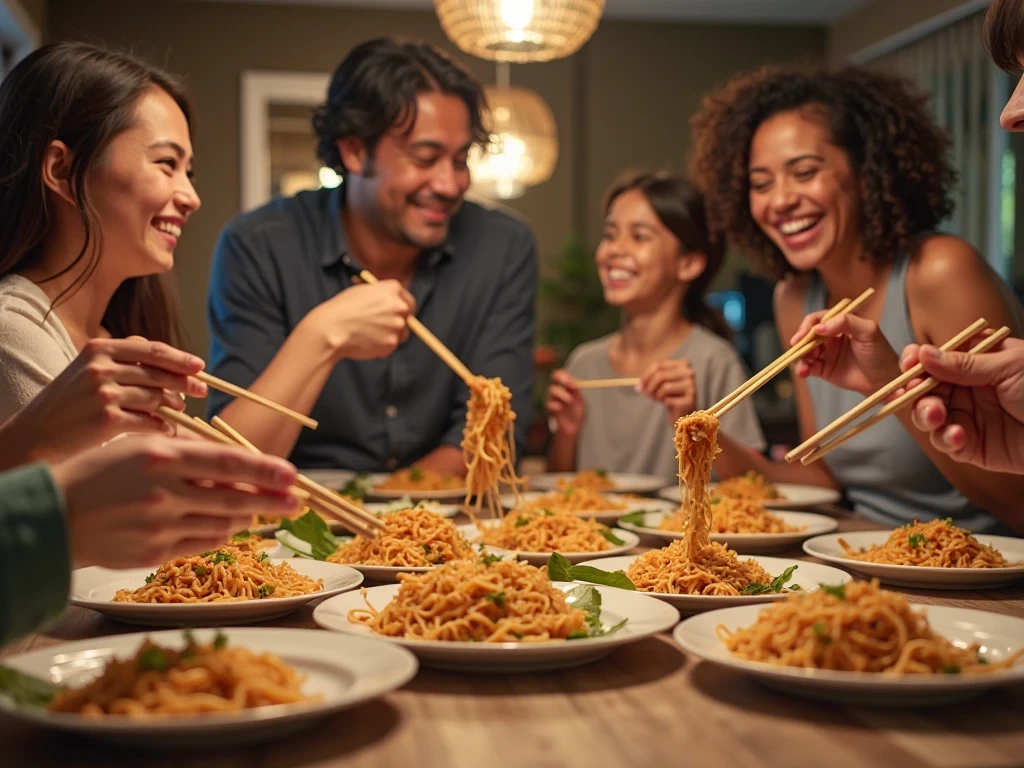
Whether you’re discovering it for the first time or returning to an old favorite, Pad Thai is a dish that invites creativity, memory, and connection. Try it out, experiment with your own twists—maybe a Southern-fried tofu or a splash of bourbon in the sauce—and make it part of your home tradition. Share your version in the comments below—we’d love to hear your flavor story!
FAQ
Q: Can ingredients be substituted for dietary preferences?
A: Absolutely! Use tamari for a gluten-free option, and swap out fish sauce with soy sauce + seaweed for a vegan umami kick.
Q: How can this be made vegan?
A: Use tofu as the protein, skip the egg, and replace fish sauce with a vegan alternative or tamari mixed with lime juice and mushroom powder.
Q: Can I adjust the recipe for larger servings?
A: Yes—double or triple the ingredients, but cook in batches to keep the texture right.
Q: Are there popular variations?
A: Yes! Pad Thai with crispy chicken, Pad Thai rolls, or even Pad Thai burritos are fun, modern twists.
💬 What’s Your Pad Thai Story?
Have you tried making Pad Thai at home? Did you add a Southern spin or a family twist? Drop your thoughts, tips, or favorite variations in the comments below! Your version might inspire someone else’s next delicious dish. 🍜💛
